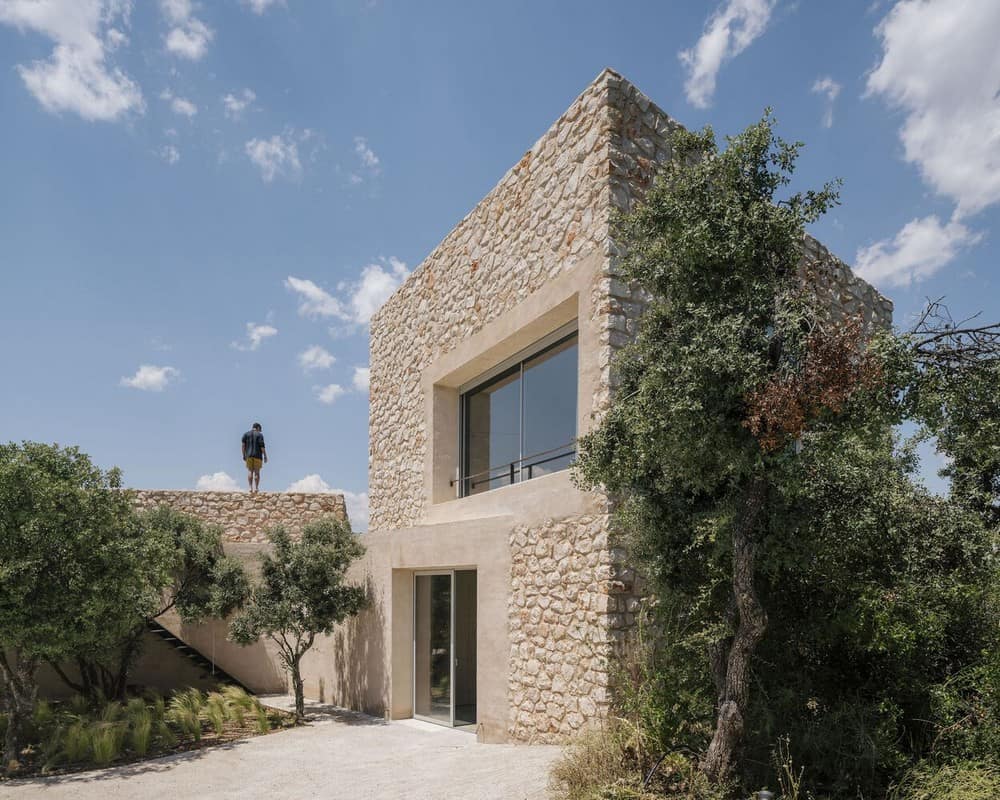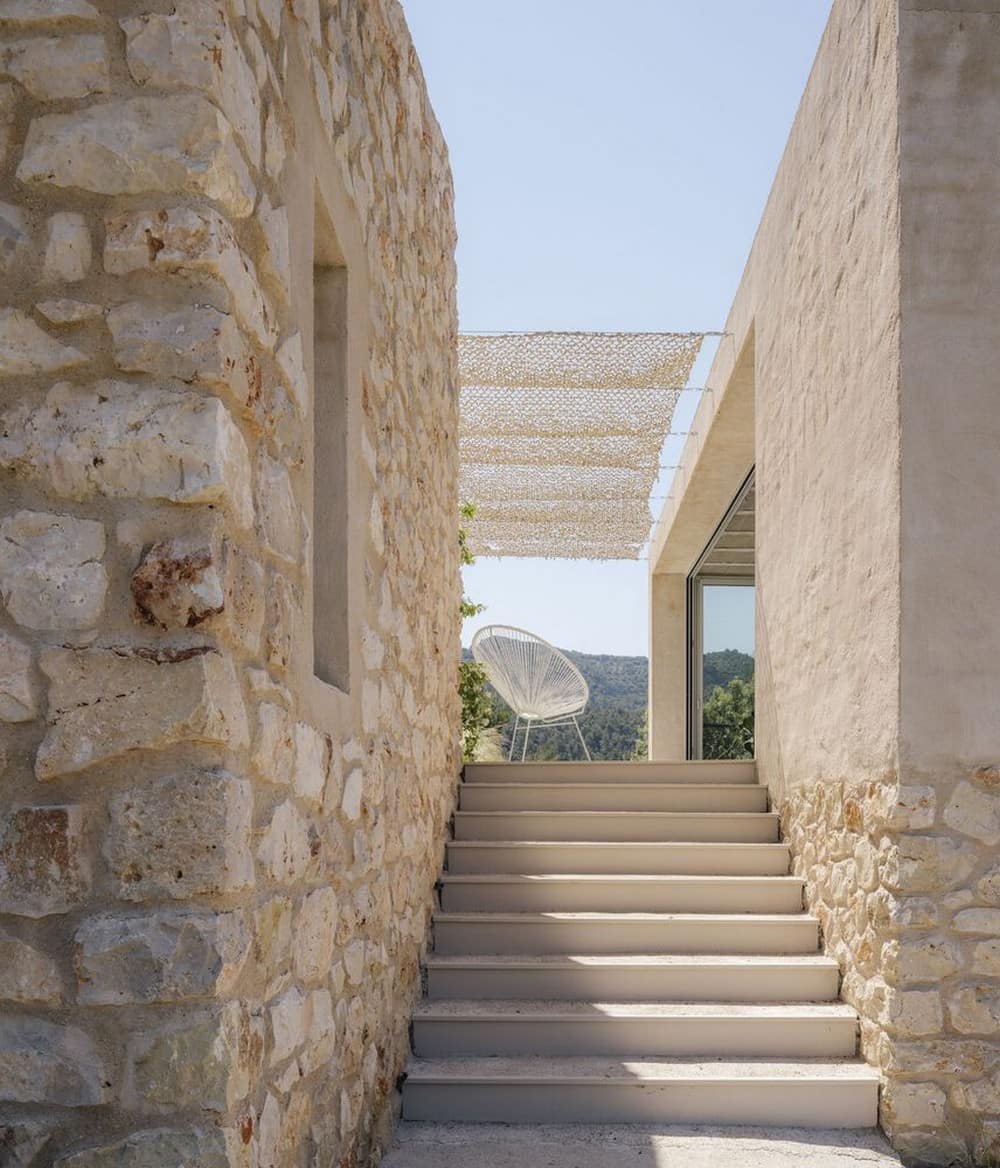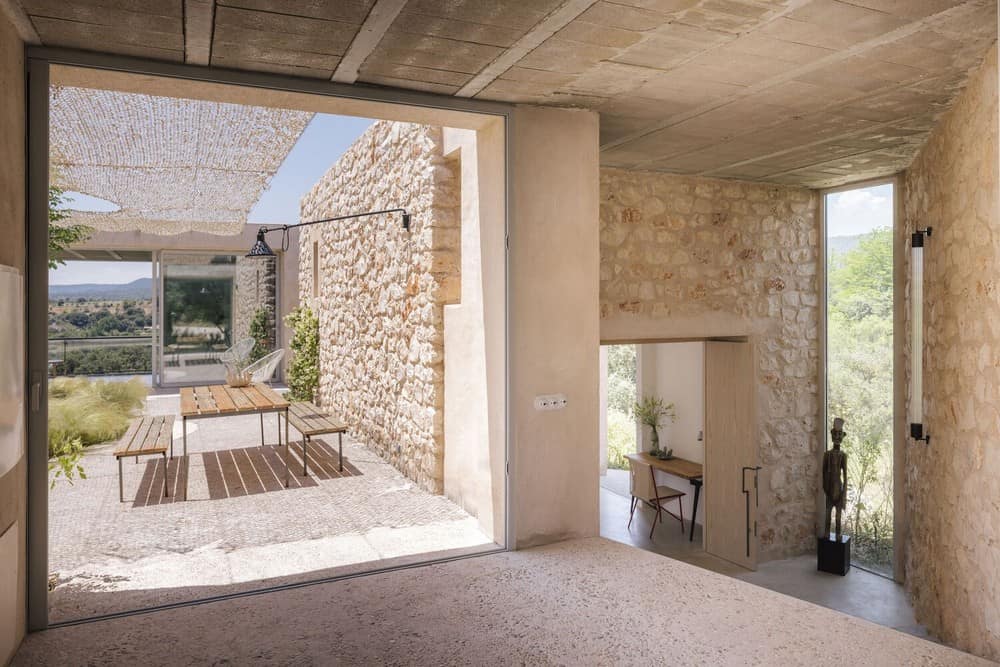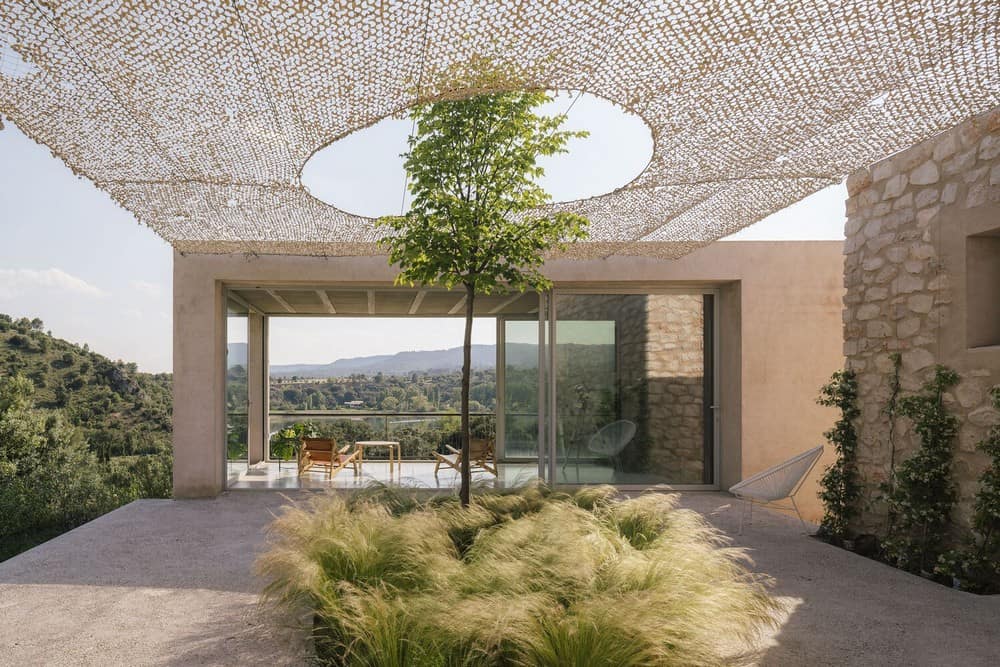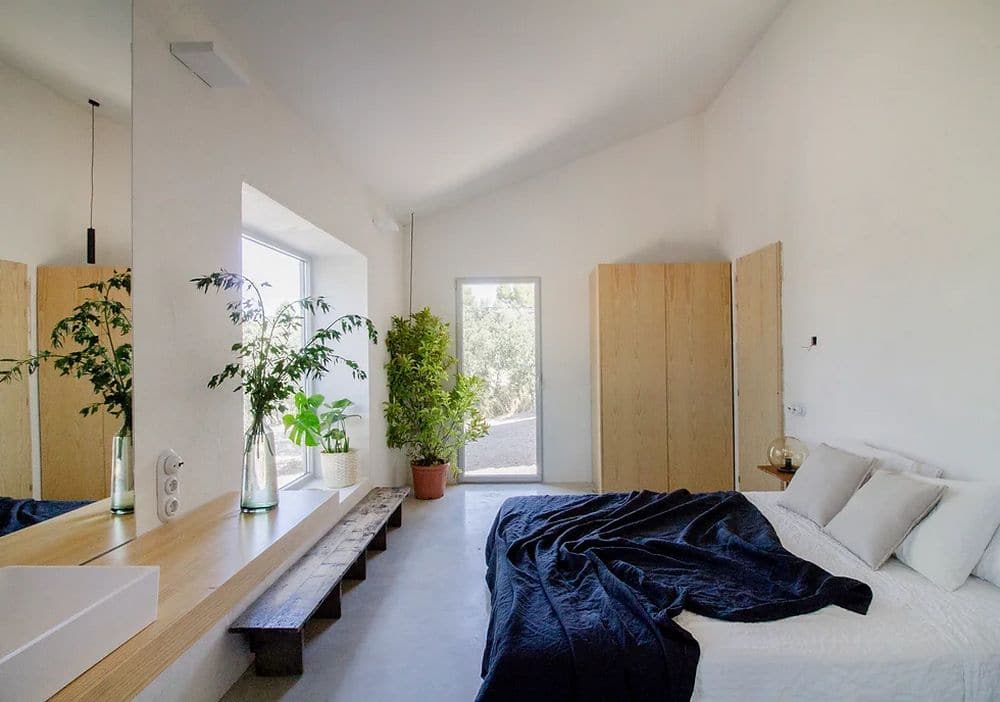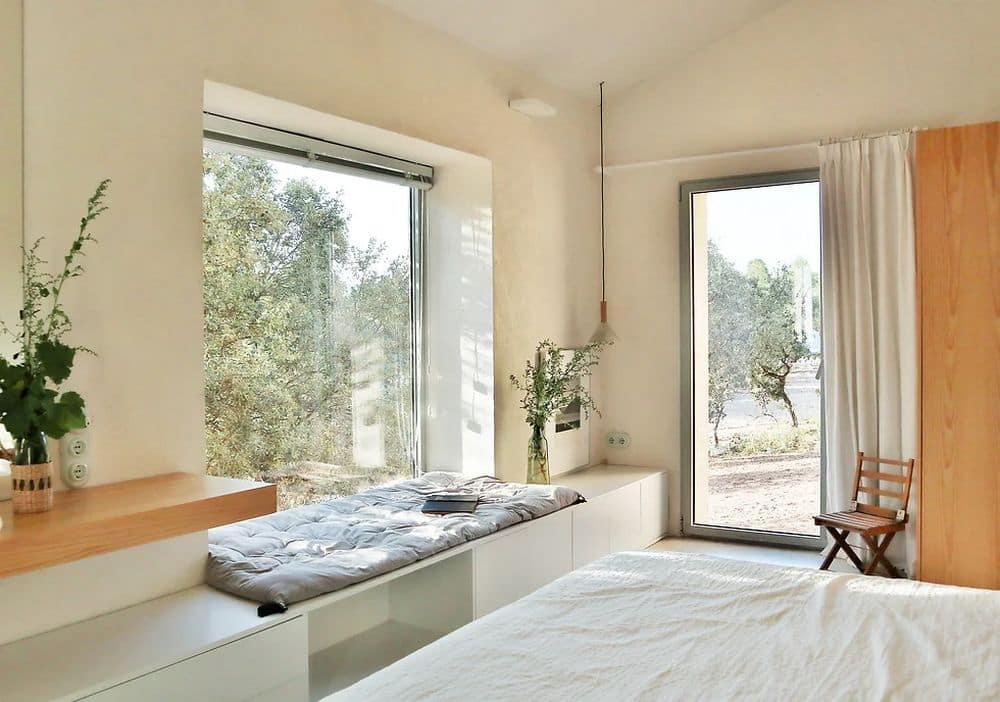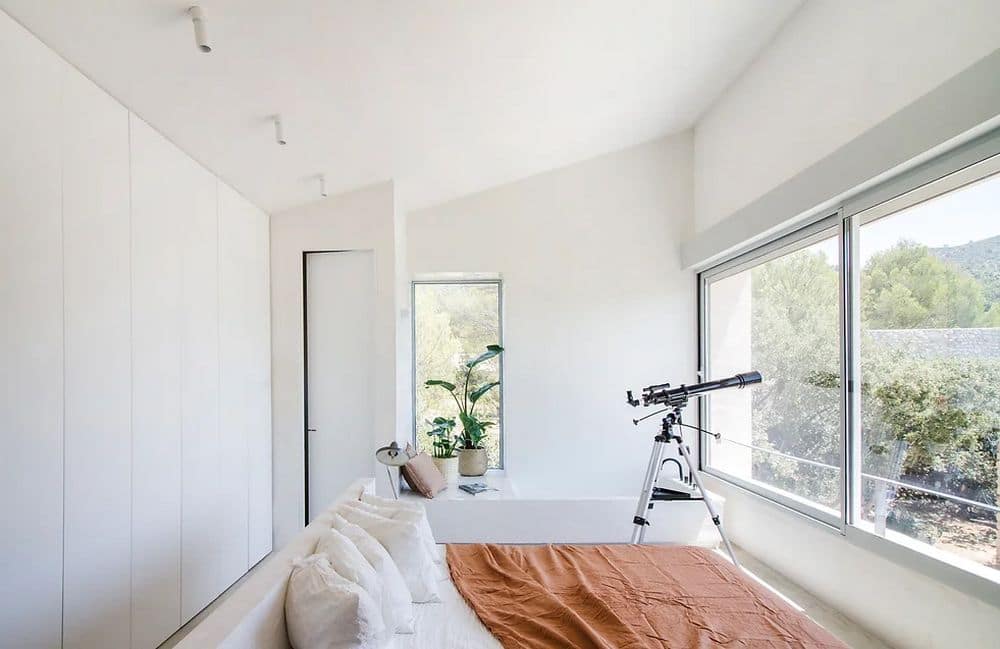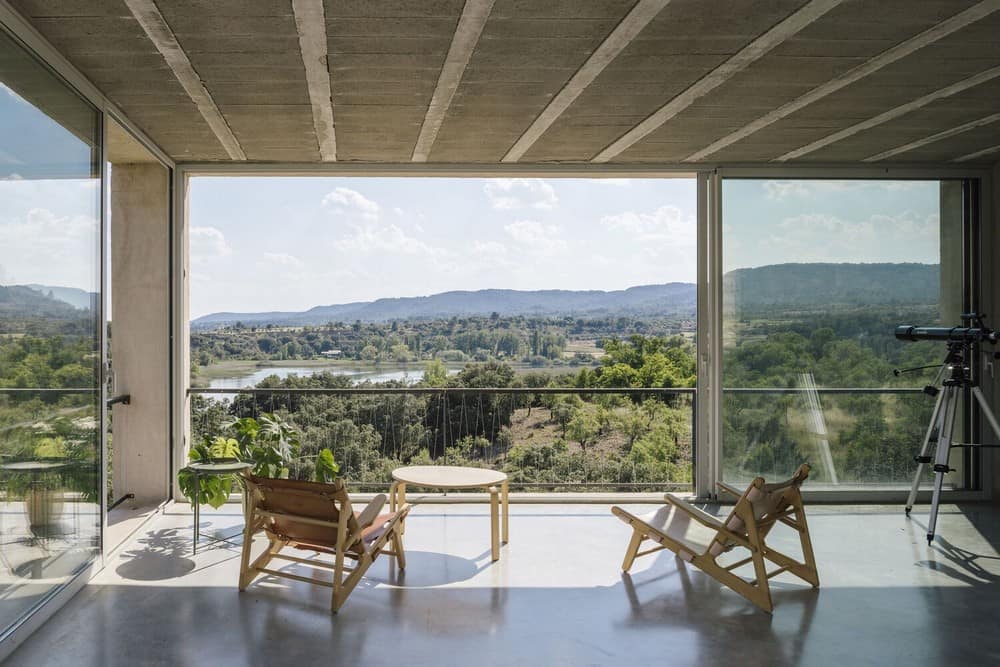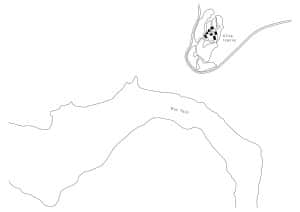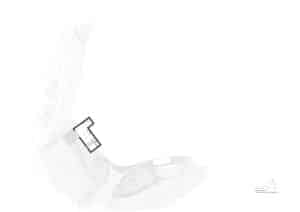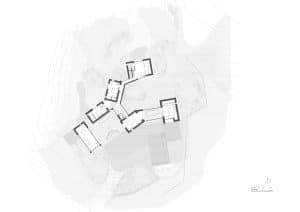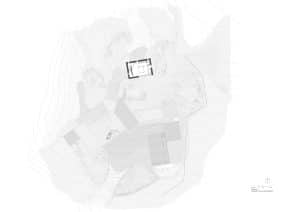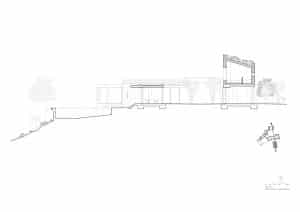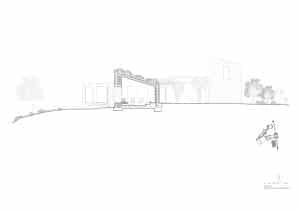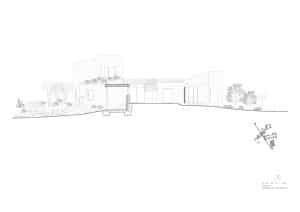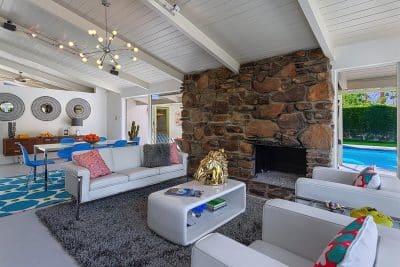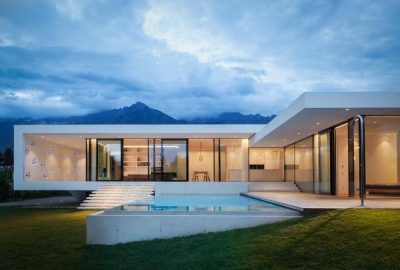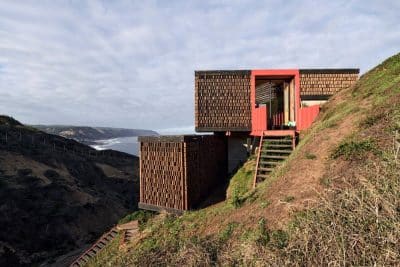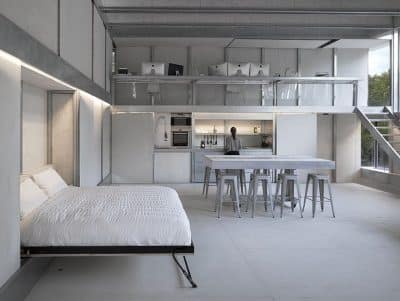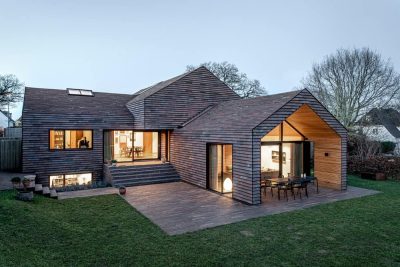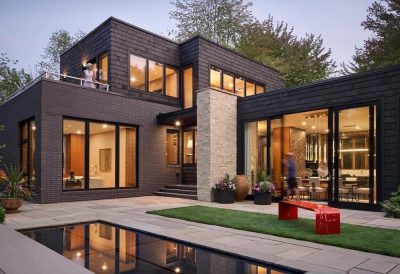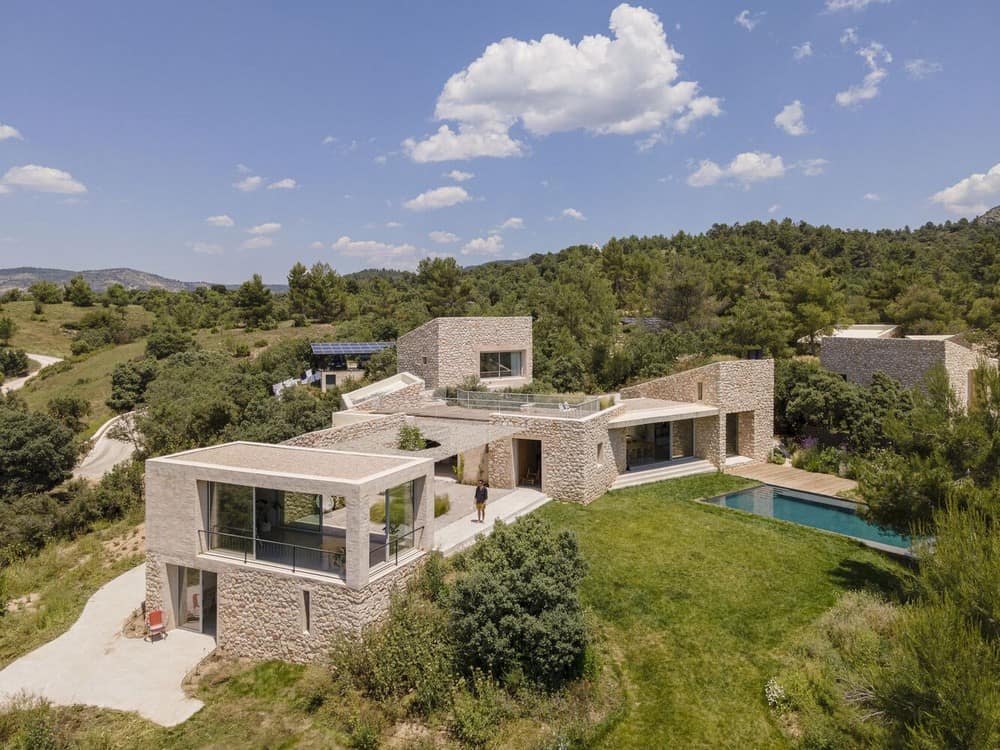
Project: Villa Icaria
Architects: Arquitectura Al Descubierto
Location: Sacedon, Spain
Area: 450 m2
Year: 2020
Photographs: Imagen Subliminal
Villa Icaria, recalling the utopian proposal of Étienne Cabet, seeks to establish a new relationship between country and city, creating a meeting place, an opportunity to once again fill the rural environment with contemporary urban activities. Its volumes are intertwined with nature on the banks of the Tagus. Its solids and cavities describe this double quality. The stone, the rural organicism and the shadow, give way to the glass, the light and the synchronic space.
The house is developed around two patios; the first welcomes us upon arrival and organizes the shadows, the second opens up to the sun and the landscape. All the spaces are shaped according to their relationship with these patios and with the exceptional view of the river and the mountains that surround it.
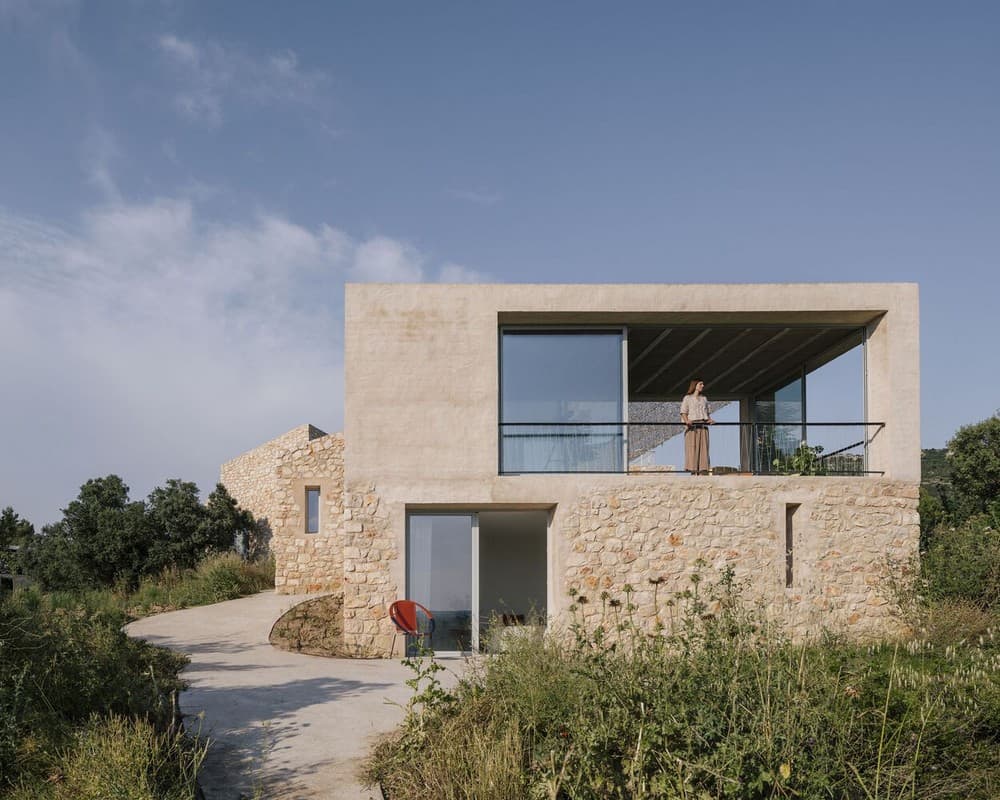
The limestone building connects with the construction traditions of the area. Each volume creates a typology of space, some become caves where one can take refuge without losing connection with the environment and others are completely fluid open spaces, which function as a visual transition between different areas of the garden.
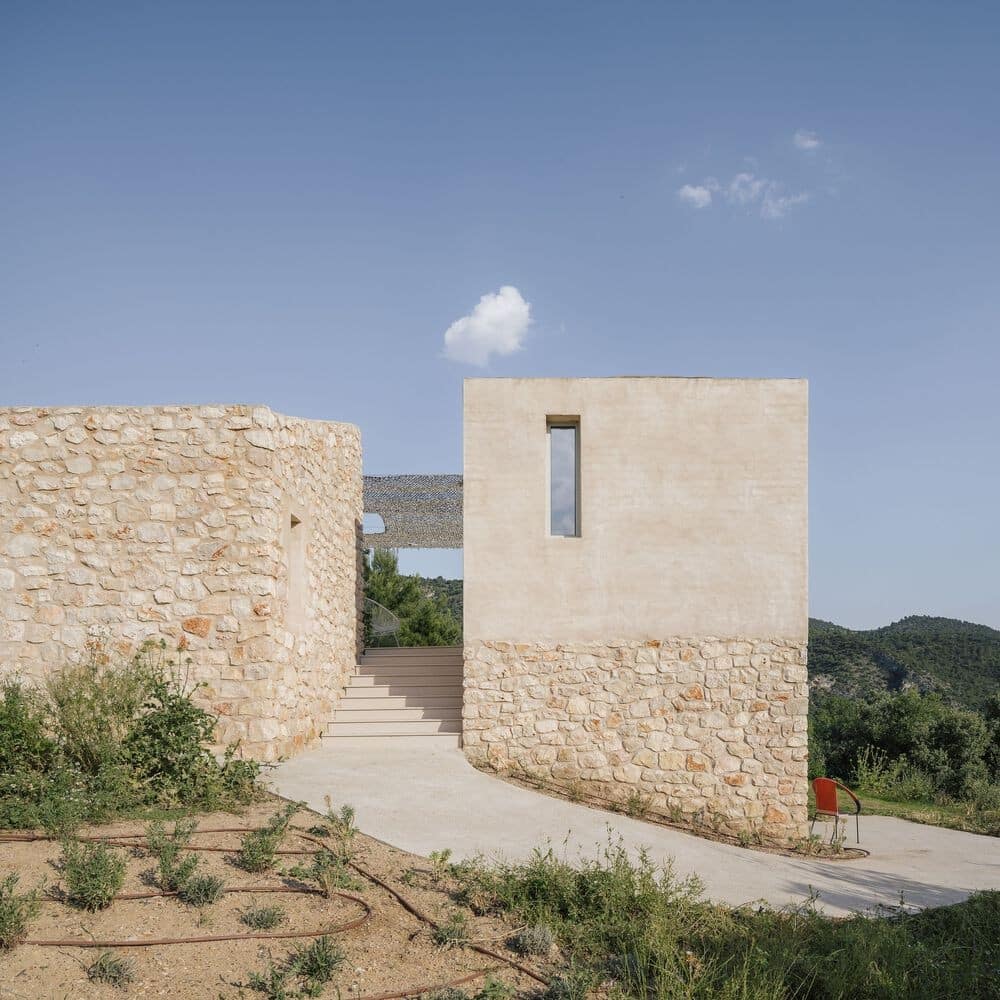
The floor of the building unfolds two hugs, who comes and who lives, creating a small town articulated around two courtyards-squares. These volumes alternate interior spaces of two types: those that are crossed by the landscape and those that are sheltered inside the stone volumes, capturing visual fragments. The entire construction is the work of local masons and local materials have prevailed in this return to the essential, the finishes are raw: the exposed concrete vaults, the rustic plastering of the interior walls and the polished concrete floors connecting with the logic of the rural.
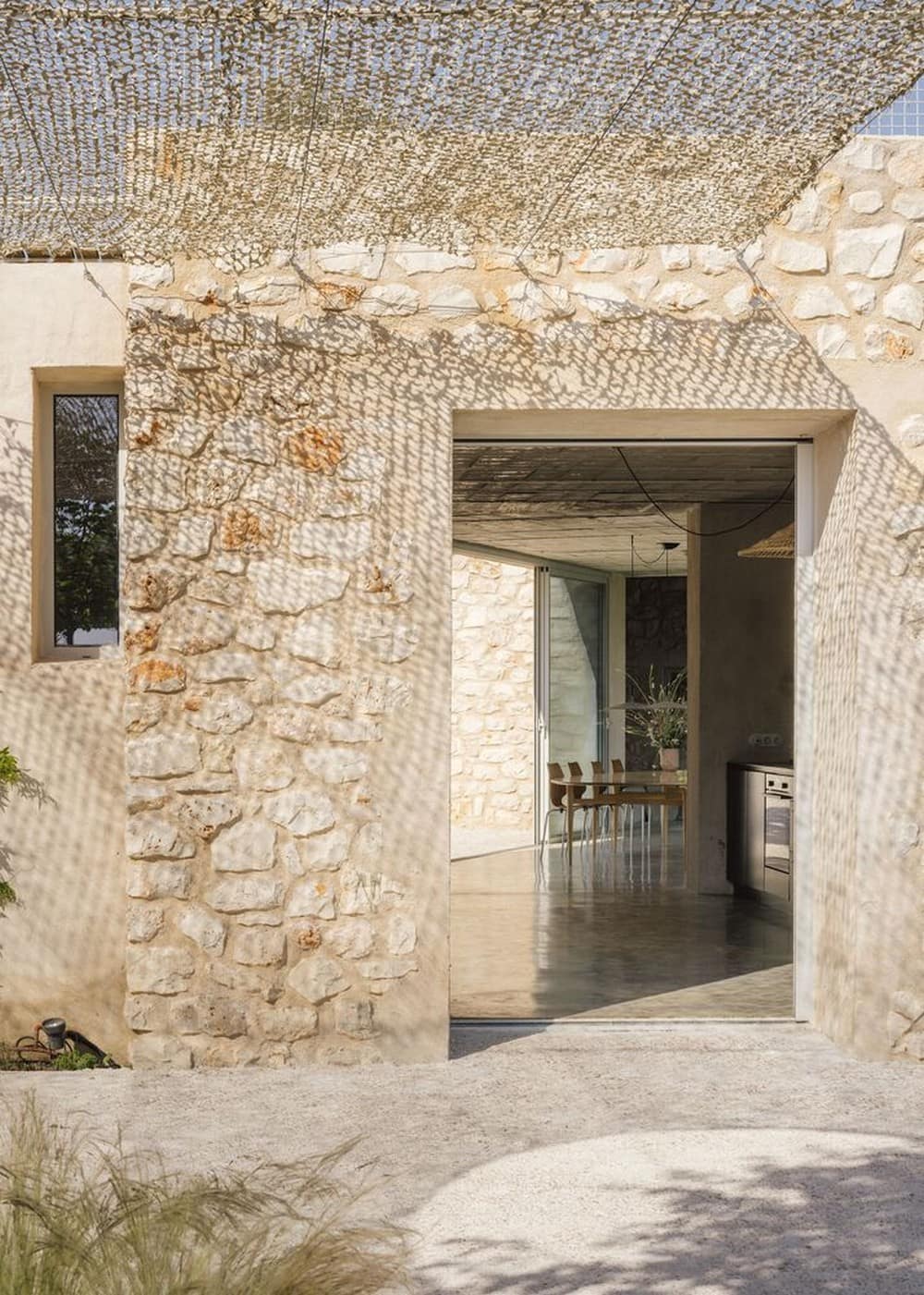
Permeability, spatial continuity and intimacy follow one another. The house aims, in short, to offer an alternative to the city, but linked to it; a place of return to the origins, creating a refuge where to develop the hyper-connected technological activity of the 21st century. The project includes different intentions -search for the best views of the river, conservation of existing trees, sustainability, self-sufficiency- to configure a whole with meaning.
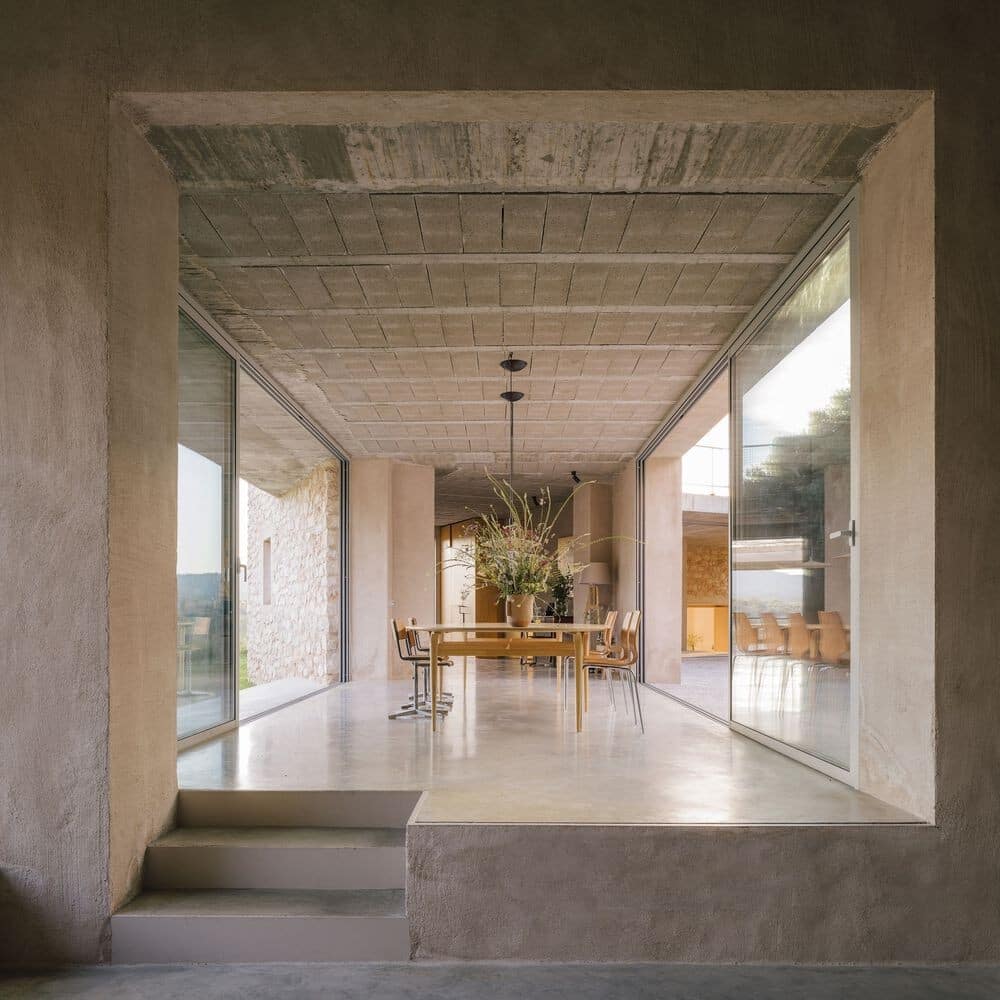
The star of the dining room is the large table with capacity for sixteen comfortably seated diners. The unique piece, designed by Bruno Mathsson based on the super-ellipse in the 1960s, is rescued for this completely permeable space. The dining room functions as a threshold between the access patio and the pool.
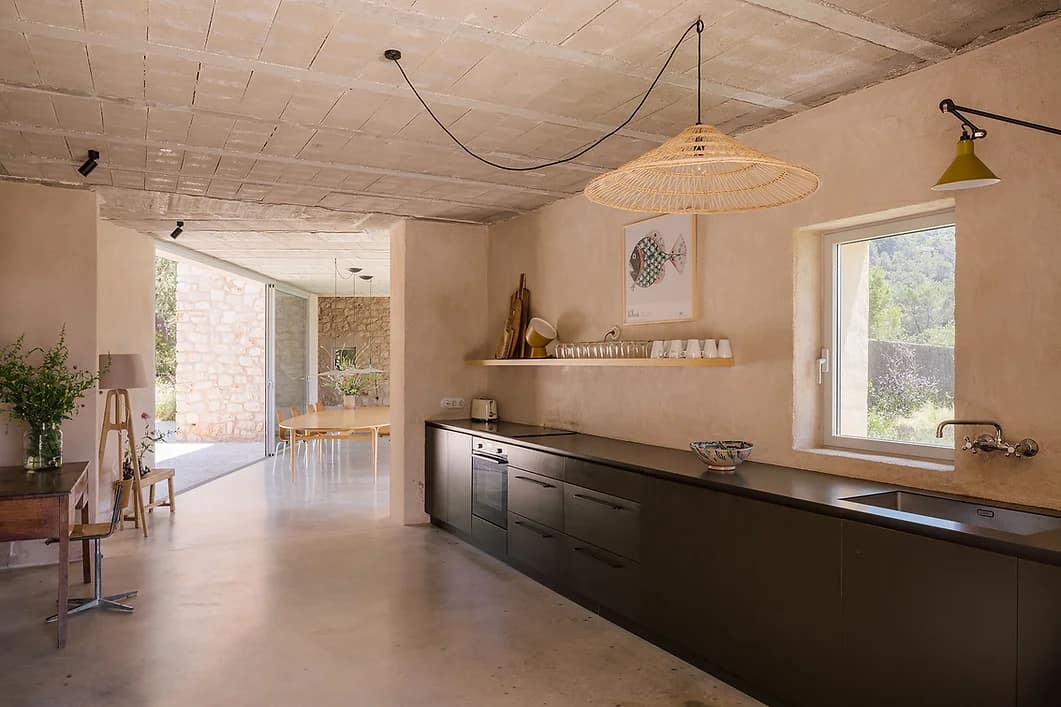
The fully equipped kitchen creates an area to share an aperitif in a casual way around the wood and ceramic table. It can also be converted into an open-plan space for transit at the time of a large party that requires more movement between the dining room and the west patio.
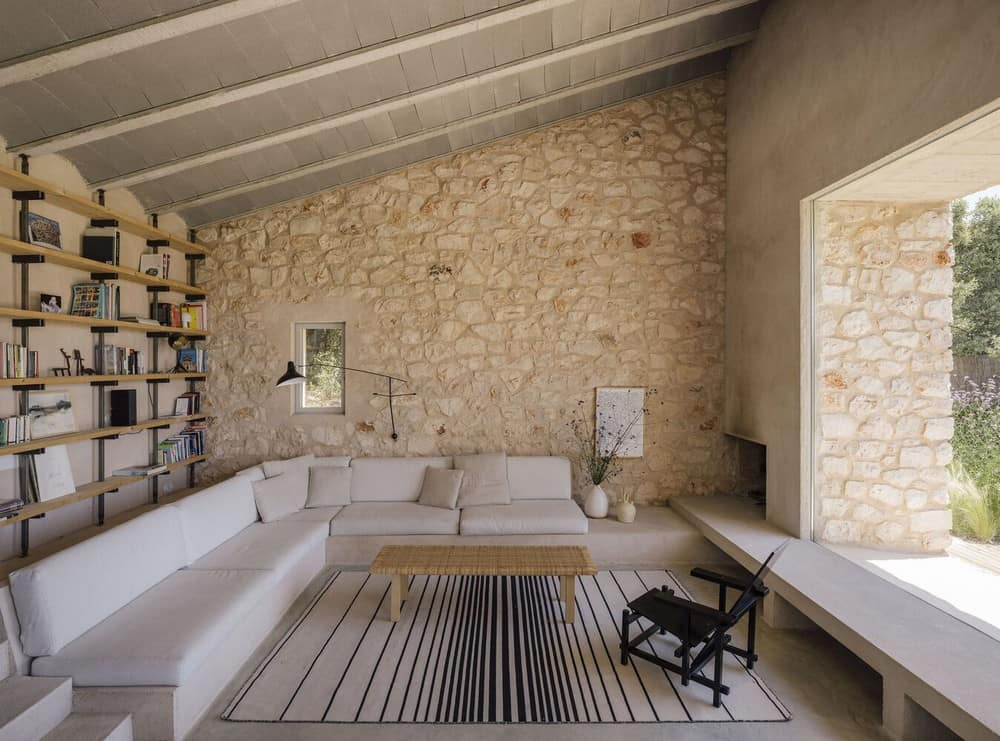
The living room is a large volume with a fireplace, a built-in sofa embraces us and shapes the space. These elements create a unique intimacy, where all the power of the landscape penetrates through a nine square meter window. Another window directly illuminates a library in the depths, creating an almost theatrical atmosphere of chiaroscuro where scene and observers are confused.
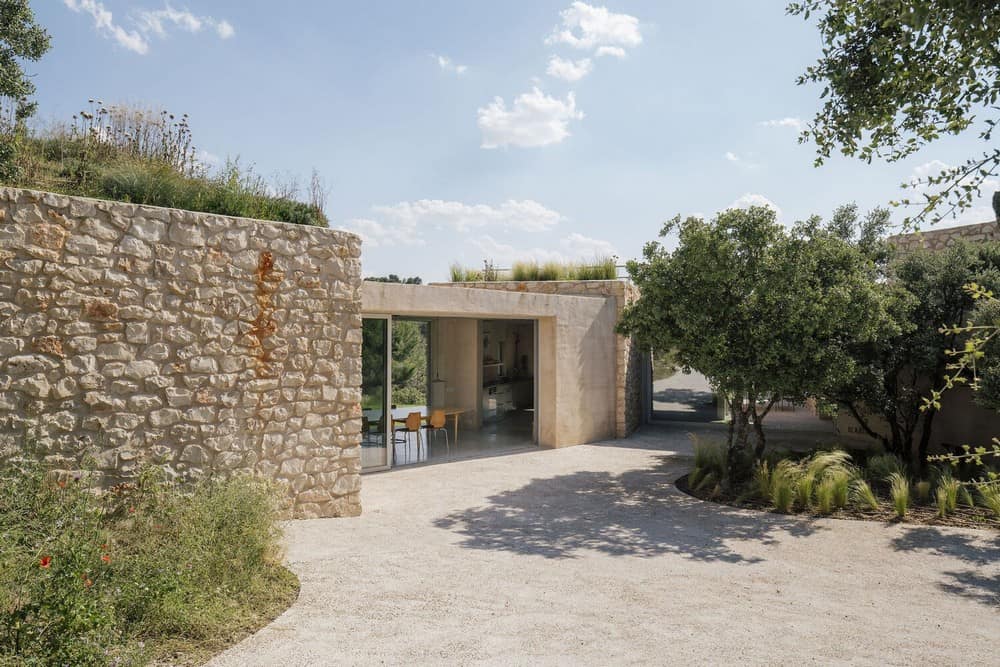
An ecological and committed architecture, powered by photovoltaic energy, with underfloor heating and insulation of natural materials. An infinity pool connects the garden and the house with the river, creating a continuous plane of turquoise water typical of this area.
